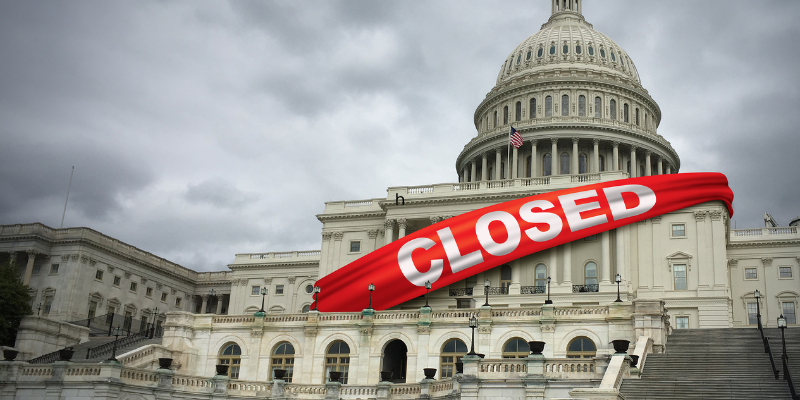|
|
|
|
|
|
|
|
October 2023 Welcome to the new edition of Disability Law News. This October 2023 issue will cover the proposed changes to the Social Security Administration’s (SSA’s) rules governing in-kind support and maintenance (ISM) and past relevant work (PRW); SSA’s contingency plan in the event of a government shutdown; a new POMS regarding Direct Express that was obtained by a FOIA request by NYLAG; a change to the mailing address for the Appeals Council; the rollout of iSSI; a 3.2 percent COLA increase; a new form for temporary institutionalization; an updated form for waivers; and an endnote. |
|
|
|
 |
|
|
Under the complex and burdensome rules governing the counting of “in-kind support and maintenance” (ISM), a person’s Supplemental Security Income (SSI) monthly benefits can be cut by up to one-third, to $609.34 in 2023, if they get help from friends or family with food or shelter. Several policy proposals are now aiming to cut ISM down to size. After proposing earlier this year to remove the consideration of food from ISM, the Social Security Administration (SSA) has now proposed a rule that would expand the application of the rental subsidy exception currently in place in seven states, including New York. In essence, it exempts individuals with high housing costs. Another newly proposed rule goes even further, by expanding the definition of “public assistance (PA) household” to include recipients of Supplemental Nutrition Assistance Program (SNAP) benefits. If a person lives in a PA household, ISM does not apply. Experts have noted that no other federal program counts in-kind support when determining benefit levels. Yet, with a monthly federal benefit rate (FBR) of only $914 for individuals in 2023, the SSI benefit is so low that its recipients remain well below the federal poverty line. |
|
|
Given that SSI benefit amounts are so meager and outdated, the effects of ISM can be cruel, in whittling a person’s monthly benefit to an amount that cannot possibly cover their basic living expenses. Expanding the Rental Subsidy Exception Under the proposed rental subsidy change published this summer, SSA would modify 20 C.F.R. § 416.1130(b) to recognize that a “business arrangement” exists when the amount of required monthly rent equals or exceeds the presumed maximum value (PMV). 88 Fed. Reg. 57910 (Aug. 24, 2023). PMV is defined as one-third of FBR plus $20; in 2023 this amounts to $324.66. See 20 C.F.R. § 416.1140. A version of this rule is already in place in the Second and Seventh Circuits and in Texas. SSA now proposes to expand this nationally and notes that it will simplify its program and advance equity. |
|
|
|
|
|
|
|
 |
|
|
In a lawsuit filed October 24, 2023, the New York Legal Assistance Group (NYLAG) has charged the Social Security Administration (SSA) with violating the Freedom of Information Act (FOIA) by engaging in a policy and practice of denying “virtually all public interest fee waivers to non-profit organizations” and for failing to make publicly available many key agency documents. NYLAG v. SSA, No. 23 Civ. 9363 (S.D.N.Y.). The lawsuit was filed in the U.S. District Court for the Southern District of New York and seeks injunctive and declaratory relief. The complaint alleges that SSA denies fee waiver requests at a disturbingly high rate. It cites data demonstrating that over the past three years, SSA denied 99.7% of FOIA fee waiver applications, “over 100 times higher” than other federal agencies. The complaint also alleges that SSA fails to consider each fee waiver on its own merits and “fails to meaningfully consider the factors governing” the approval of fee waivers under FOIA. The lawsuit challenges the specific denial of two fee waivers submitted by NYLAG, and the failure to respond to requests. |
|
|
NYLAG also charges SSA as having a policy and practice of keeping policy documents secret from the public. Advocates frequently encounter policies relevant to an issue faced by a claimant that are not posted along with other Program Operations Manual System (POMS) on the agency’s website. An example cited in the complaint is a policy pertaining to Direct Express, POMS GN 02402.007, that was recently released in response to a FOIA request by NYLAG. The complaint notes that upon release, the content does not appear to justify SSA’s withholding of the POMS and designating it as “sensitive.” The recent release of this particular POMS is discussed later in this issue of Disability Law News. The complaint alleges that the failure to publish the POMS in its entirety violates FOIA. The same is charged with respect to all Emergency Messages (EMs) and Administrative Messages (AMs), as well as SSA’s failure to publish an index of those documents. The complaint and other related documents can be found on NYLAG’s website. |
|
|
|
|
|
Hearing Scheduled for Social Security Nominee |
|
The Finance Committee of the U.S. Senate will hold a hearing on November 2, 2023, at 10 a.m., on the Biden Administration’s nomination of former Maryland Governor Martin O’Malley as the next Commissioner of Social Security. If approved, O’Malley would be the first Democratic-appointed commissioner since 2001. He would complete the remainder of the six-year term expiring January 19, 2025, previously held by Andrew Saul. In a letter to the committee, the Social Security Advisory Board (SSAB), a bipartisan panel appointed by Congress, recently urged swift action to consider the nomination. It also recommended legislation to change how Social Security commissioners are appointed, so that they once again serve at the pleasure of the President, as was the case in the past, when the Social Security Administration (SSA) was housed in the Department of Health and Human Services. |
|
|
In the past decade, SSA has had an Acting Commissioner for eight of those years. The SSAB noted that in the nearly thirty years since its creation, the six-year term for the post of Commissioner “has not been successful.” As discussed in the last issue of this newsletter, many have cited the absence of a permanent commissioner as impeding the agency’s ability to address many of its current problems. In September 2022, a group of 16 senators urged President Biden to nominate a permanent commissioner. The hearing will take place in Room 215 of the Dirksen Senate Office Building and will be streamed live on the committee's webpage. |
|
|
|
|
|
 |
SSA Shares Contingency Plan for Government Shutdown |
|
On September 30, 2023, Congress narrowly averted a government shutdown by passing a 45-day Continuing Resolution extending the deadline for completing work on FY2024 appropriations to November 17, 2023. With a shutdown this year still very possible, both claimants and advocates may wonder about the impact on the Social Security Administration (SSA) and its operations. SSA had shared on August 14, 2023 its latest contingency plan, with steps to be taken to ensure continuing activities in the event of a potential lapse in federal appropriations or a partial government shutdown. It highlights the projected number of staff expected to be furloughed, which SSA operations will continue during a shutdown, and further contingencies should the shutdown last longer than anticipated. |
|
|
Although the processes relevant to disability appeals and claims processing would continue, a shutdown would still result in a cut in important SSA services, such as benefit verification. And since the disability determination services (DDSs) are run by States, SSA cannot ensure that the states will maintain DDS operations ; SSA can only ensure that it will reimburse them once funding is restored. View the whole plan here. |
|
|
|
|
|
 |
SSA Announces New Mailing Address for Appeals Council |
|
The Social Security Administration released a statement in August announcing the Appeals Council’s new mailing address. The Falls Church, Virginia location will no longer be in operation as of September 30, 2023. Please be sure to use the following address to avoid processing delays.
Social Security Administration
Office of Appellate Operations
6401 Security Blvd.
Baltimore, MD 21235-6401
|
|
|
|
|
|
SSA Announces First Phase of "iSSI" |
|
On August 9, 2023, the Social Security Administration (SSA) released a proposed request for information related to the first phase of the agency’s plan to create “a fully online, simplified” process to apply for Supplemental Security Income (SSI) benefits. The Public Inspection document is available for review here. SSA is embarking on a multi-year effort to simplify the SSI application process, wherein applicants could apply online without the need to visit a field office. The first phase of the initiative, expected to be unveiled fully by the end of this year, will allow claimants to initiate an SSI application and establish a protective filing date. The online application will be called “iSSI” and part of the “iClaim” system already used for Title II SSDI applications. SSI claimants will be required to answer basic eligibility questions, provide medical information, and sign a medical release. Parts of the application will be prepopulated with existing information from SSA’s system, reducing the burden on claimants. Once the claimant has completed the online portion of the application, a field office technician will review and send it to DDS for a disability determination. The iSSI format is a significant improvement from the format of SSA’s paper SSI application, Form SSA-800, which currently comprises 23 pages and 60-odd questions. Form SSA-8000 is not made available online by SSA but can be found on the website for SSI/SSDI Outreach, Access, and Recovery (SOAR). Modeled after SSA’s deferred application Form SSA-8001, the streamlined iSSI process involves only 21 total questions. Justice in Aging has made available for download here a preview provided by SSA. |
|
|
Advocates nationwide are cautiously optimistic that these changes will reduce the processing time for SSI applications currently exacerbated by SSA’s staffing crisis. At the same time, there is concern about the limited scope of the effort, and the broad swath of claimants who are excluded from this service. In its current form, iSSI will only be available to adults aged 18-64 who are not married, have no children, and have never applied for or received SSI benefits in the past. The restriction on those who have applied for or received benefits in the past is particularly worrisome, as it common for SSI applicants to have submitted a prior application. Those who may have had benefits terminated for technical reasons would not be able to use this system. The restriction on children also comes at a time when there has been a disturbing decline in the number of children receiving SSI.The iSSI system can be used by the claimant themselves or by a third party. Since the population applying for SSI typically face barriers in accessing digital services, many individuals will be relying on third party assistance to access the service. The iSSI process is one of several efforts initiated by SSA in the past two years to increase SSI outreach and improve online access. You can read more about SSA’s overall efforts to broaden access online and increase SSI outreach in the April 2022 issue of this newsletter. |
|
|
|
|
|
 |
SSA Announces 3.2 Percent COLA Increase |
|
The Social Security Administration (SSA) announced that the cost-of-living adjustment (COLA) for monthly Social Security and Supplemental Security Income (SSI) benefits will see a 3.2 percent increase in 2024. This comes after last year’s record-breaking 8.7 percent COLA, the largest increase in decades. The COLA increase raises the limit of taxable maximum earnings to $168,600 while setting a higher limit on earnings for those younger than the “full” retirement age or nearing it. No limit on earnings was placed on workers who are at “full” retirement age or older for the year. |
|
|
The increase will take effect on December 29, 2023 for over 7 million SSI recipients, while over 66 million Social Security beneficiaries will have their monthly benefits increased in January 2024. Notifications of this new benefit amount will be sent via postal mail beginning in early December. A recipient can view their individual COLA notice online on their “my Social Security” account. |
|
|
|
|
|
SSA Simplifies Form 632 for Overpayment Waivers |
|
Last month, the Social Security Administration (SSA) revised Form SSA-632-BK, Request for Waiver of Overpayment Recovery. The new form is shorter, and many questions have been combined compared to the prior version. Notably, the form now advises claimants of the option of “administrative” waiver if their overpayment is less than $1,000. The new waiver form asks fewer questions about how and why the overpayment occurred – including questions that many advocates found would “trap” a claimant into admitting they were at fault. SSA eliminated a lot of questions about whether someone else, a family member, or a representative payee caused the overpayment. For the first time, SSA added language about the statutory “administrative” waiver, with instructions to contact the agency by phone to process an overpayment of less than $1,000. Administrative waiver is not automatic and must be affirmatively requested. |
|
|
If, from the facts apparent on the face of the request there is an indication of fault, SSA will conduct a full waiver or reconsideration development, POMS SI 2260.030(B)(2). Hopefully, this form will mean that more unrepresented claimants can avail themselves of this option. SSA also added a question about whether a Title II beneficiary has any dependents in their household who receive a needs-based benefit. If so, they skip the income/asset and household expenses portion of the form as recipients of Supplemental Security Income (SSI) already could. SSA also eliminated the section where a beneficiary had to “compare” their income to their expenses, disclose whether they had funds available to repay the overpayment, and predict their future financial circumstances. In a related development, SSA recently increased the monthly overpayment tolerance from $25 to $55. For more info, see the July 2023 issue of Disability Law News. |
|
|
|
|
|
 |
|
|
The Social Security Administration (SSA) recently published a new form, SSA–186, Temporary Institutionalization Statement to Maintain Household and Physician Certification, for claimants to use in requesting continuation of Supplemental Security Income (SSI) payments during temporary institutionalization (TI). The form is intended to simplify a claimant’s ability to maintain their full benefit rate while temporarily institutionalized, thereby helping maintain their living arrangement upon discharge. Under section 1611(e)(1)(G) of the Social Security Act, when an SSI recipient enters a public institution or private medical treatment facility with Medicaid paying more than 50 percent of expenses, SSA reduces recipients’ SSI payments to the nominal monthly benefit rate of $30. SSA may waive the reduction if the stay is temporary, defined as a maximum of three months. But to waive the reduction during that three-month period, SSA requests two pieces of documentation: (1) a physician’s certification stating the SSI recipient will be institutionalized for a maximum of three months; and (2) certification from the recipient or a knowledgeable source confirming the recipient needs SSI payments to maintain the living arrangements to which the individual will return post-institutionalization. See also 20 C.F.R. § 416.212(b)(1). |
|
|
Advocates have been urging SSA to streamline this process, because obtaining the required documentation is difficult to do while hospitalized. The new form is intended to make it easier for SSI recipients and those assisting them to obtain the statement of need and the physician’s certification all on one standardized document. See Agency Information Collection Activities, 86 Fed. Reg. 54007 (Sep. 29, 2021). POMS SI 00520.140, Temporary Institutionalization (TI) Benefits outlines the requirements for documenting the physician’s certification and the recipient’s need to maintain their living arrangement. This section of the POMS was updated on September 8, 2023, with instructions relevant to Form SSA-186. Of note, the instructions state that while the form is the “principal way” to develop the physician’s certification and the need to maintain their living arrangement, the information can also be submitted in another format. |
|
|
|
|
|
Rules & Regulations _______________________________________________________________________________________________________ |
|
|
|
On September 29, 2023, the Social Security Administration (SSA) issued a Notice of Proposed Rulemaking (NPRM) proposing a significant change to the definition of past relevant work (PRW). 88 Fed. Reg. 67135 (Sept. 29, 2023.) Under the Social Security Act, a person will be found disabled if they are unable to do their PRW, or engage in any other work, on account of a mental or physical impairment. 42 U.S.C. §§ 423(d)(1)(A), 1382c(a)(3)(A)–(B). SSA is proposing to amend 20 C.F.R. §§ 404.1560, 1565, 416.960, 416.965 to reduce the relevant work period from fifteen to five years, a change expected to result in more claim allowances. In SSA's five-step sequential evaluation of disability, PRW is first considered at the fourth step, with a determination of whether a claimant can still meet the demands of those specific jobs, given their residual functional capacity (RFC). A person’s RFC is the most that they can do despite their impairment-related limitations. 20 C.F.R. §§ 404.1545, 416.945. PRW is currently defined as work done at the level of substantial gainful activity (SGA) level in the past fifteen years, and that lasted long enough for the individual to learn how to do it. 20 C.F.R. §§ 404.1560(b)(1), 416.960(b)(1). The relevant period looks back fifteen years prior to the adjudication date, but in some cases can go back farther. |
|
|
Since the ability to return to PRW results in the denial of the claim at Step Four, the reduction in look-back period will, consequently, result in fewer denials at that step. The change would also result in more allowances at Step Five. At that step, work experience (whether a person has a history of skilled work) is considered a vocational factor when determining whether the person can do other work in the economy. This includes the level of work (i.e. skilled or unskilled) considered when applying the Medical Vocational Guidelines (“the Grids”). The change to PRW will also impact the Medical Vocational Profile known as the “No Work” Profile, under which a person may be found disabled if they are at least 55 years old, have no more than a limited education, and no PRW. 20 C.F.R. §§ 404.1562(b), 416.962(b). |
|
|
|
|
|
|
|
“Close Proximity of Time” Rule Extended |
|
The Social Security Administration (SSA) announced it is extending the temporary rule change it previously issued on July 23, 2021. The new temporary final rule (TFR) addresses the “close proximity of time” requirement of the April 2021 revisions to the Listing of Impairments for musculoskeletal disorders. The temporary rule allows for a “flexible” reading of the new listings so that “close proximity” for meeting the relevant criteria may occur in a twelve-month period instead of four. |
|
|
The TFR, which became effective October 30, 2023, and has a comment period closing on November 28, 2023, recognizes that changes and delays in healthcare since the pandemic continue to make the temporary rule necessary. The rule will remain in effect until May 11, 2025, unless it is extended by a final rule. See the January 2021 and July 2023 issues of this newsletter, for a related discussion of Emergency Message (EM) 21027 and EM 21027 Rev 2. |
|
|
|
|
|
 |
|
|
Through a Freedom of Information Act (FOIA) request, the New York Legal Assistance Group (NYLAG) recently obtained the sections of the Social Security Administration (SSA’s) Program Operations Manual System (POMS) related to the Direct Express debit card program, POMS GN 02402.007. The POMS was not previously made public and SSA had denied prior requests for a copy of the policy. The Direct Express debit card program was developed over a decade ago by the U.S. Treasury Department to eliminate physical checks and increase direct bank deposits for recipients of Social Security benefits. The program was designed to allow those who did not have traditional bank accounts to receive their benefits electronically. Direct Express estimates that half of the cardholders are Supplemental Security Income (SSI) recipients. |
|
|
But the program has not been without problems. Advocates report that resolving issues with Direct Express customer service is difficult - there are no physical locations like traditional banks. But also, many clients lack the resources to navigate a process that often involves providing extensive proof of their identity and utilizing multiple means of communication like phone, fax, and email. SSI recipients often need the entirety of their benefits to pay their monthly bills and suffer losses when their accounts are blocked. Maybe worse yet, consumer protection organizations like the Better Business Bureau (BBB) may not investigate complaints because Direct Express is considered a Treasury program. |
|
|
|
|
|
|
|
Administrative Decisions _______________________________________________________________________________________________________ |
|
 |
AC Remands on Exceptions and on Evidence Rule Applied at CDR |
|
While the remand rate at the Appeals Council (AC) remains an abysmally low twelve percent nationally, Mike Telfer from Legal Aid Society of Northeastern New York reported two notable successes at this level. The first win came after filing exceptions in a case that had been previously remanded by U.S. District Court for the Northern District of New York. As highlighted in a recent issue of this newsletter, a claimant denied a second time after a federal court remand has the option of either filing exceptions with the AC or skipping that level entirely and filing straightaway with federal court. 20 C.F.R. §§ 404.1484, 416.984. Upon receiving that second unfavorable ALJ decision, Mike opted to file exceptions and received an AC remand for his client. In that case, the AC found the ALJ did not comply with the AC’s previous directives to consider the statutory factors of supportability and consistency when determining whether medical source statements and prior administrative medical findings were “persuasive.” The AC also criticized the ALJ for not adequately considering the client’s symptoms per SSR 16-3p or considering whether the client had good cause for treatment noncompliance. The AC’s remand included instructions to a “new” ALJ to obtain evidence from a medical expert and supplemental evidence from a vocational witness. |
|
|
Mike received another remand for a client who was undergoing a Continuing Disability Review (CDR). The ALJ determined that his client was no longer disabled due to medical improvement. Mike requested the client’s prior file per 20 C.F.R. §§ 404.1593, 416.993, which requires the prior entitlement’s medical evidence be obtained for the review, but the ALJ ignored his request. The AC determined the judge could not make a medical improvement determination without examining the evidence from the prior allowance. The ALJ also failed to apply the correct rules for evaluating opinion evidence. In fact, the judge seemed to use both the current and prior rules such that it was unclear which standard he actually applied. The AC noted that the HALLEX had been recently revised to clarify which rules apply on a CDR. HALLEX I-5-3-30 IV.E. In this case, because the client originally filed for disability benefits before March 27, 2017, and it was the first CDR, the prior rules for “weighting” opinion evidence would apply rather than the current rules that consider how persuasive an opinion is. DAP advocates: we want to hear about your wins! Email us at jkarr@empirejustice.org or esicilia@empirejustice.org. |
|
|
|
|
|
Send Us Your Decisions!
Have you had a recent ALJ or court decision or SSA update that you would like to see reported in an upcoming issue of the Disability Law News?
We would love to hear from you!
Contact Jennifer Karr, jkarr@empirejustice.org or Emilia Sicilia, esicilia@empirejustice.org |
|
|
|
| _______________________________________________________________________________________________________ |
|
This "Bulletin Board" contains information about recent disability decisions from the United States Supreme Court and the United States Court of Appeals for the Second Circuit. The Second Circuit summaries, as well as earlier decisions, are also available here. Synopses of non-precedential summary orders issued by the Second Circuit are available here. We will continue to write more detailed articles about significant decisions as they are issued by these and other Courts, but we hope that these lists will help advocates gain an overview of the body of recent judicial decisions that are important in our judicial circuit. |
|
|
|
U.S. v. Vaello Madero, 142 S. Ct. 1539 (April 22, 2022) In an 8-1 decision, the Supreme Court held that the exclusion of residents of Puerto Rico from the Supplemental Security Income (SSI) program does not violate the United States Constitution. The Court applied the rational basis test to find it permissible to treat residents of territories such as Puerto Rico differently than if they lived in a state because of the different tax status applicable to territories, an outcome authorized by the Territories Clause of the Constitution. The Court declined to rebuke the Insular Cases, a line of case law that sanctioned the colonial relationship of the U.S. to the territories, and that determined the full scope of the Constitution did not apply. A lone dissent by Justice Sonia Sotomayor described the majority decision as “especially cruel given those citizens’ dire need for aid.” Carr v. Saul, 141 S.Ct. 1352 (Apr. 22, 2021) The Supreme Court held that a claimant is not precluded from raising a legal issue for the first time in U.S. District Court if it was not raised before the Administrative Law Judge (ALJ). The underlying issue in question in Carr and its companion cases was whether the ALJ was properly appointed under the Appointments Clause of the U.S. Constitution. In the aftermath of Lucia v. Securities and Exchange Commission, 138 S.Ct. 2044 (2018) challenging the constitutionality of SEC ALJs, Carr and other plaintiffs challenged the legitimacy of the ALJs who had denied their disability claims and sought new hearings. The Commissioner argued the plaintiffs had forfeited their Appointments Clause challenges because they had not raised them before SSA during the administrative appeals process. The Supreme Court resolved a conflict in the circuits by holding that given the non-adversarial nature of SSA hearings, issue-exhaustion is not required. Smith v. Berryhill, 139 S.Ct. 1765 (2019) The Supreme Court held that an Appeals Council dismissal of a request for review is a final decision subject to judicial review. The Court unanimously held that where the Appeals Council has dismissed a request for review as untimely after a claimant has obtained a hearing from an ALJ on the merits, the dismissal qualifies as a “final decision . . . made after a hearing” within the meaning of 42 U.S.C § 405(g). It distinguished its earlier ruling in Califano v. Sanders, 430 U.S. 99, 97 S.Ct. 980, 51 L.Ed.2d 192 (1977), by emphasizing that as opposed to the denial of a request for reopening in Sanders, there had been a decision by an ALJ on the merits of the plaintiff’s claim. Biestek v. Berryhill, 139 S.Ct. 1148 (2019) In a 6-3 decision, the Court declined to adopt a categorical rule that a vocational expert’s supporting data must be provided in order for the testimony to constitute substantial evidence. But the majority acknowledged that in some cases it may be possible to draw an adverse inference against a VE who refuses to provide supporting data. |
|
|
|
| Rucker v. Kijakazi, 48 F.4th 86 (2d Cir. Sept. 6, 2022) The court remanded, finding the Administrative Law Judge (ALJ) failed to assess the plaintiff’s mental Residual Functional Capacity (RFC) properly under the under the pre 2017 opinion evidence regulations that applied in this case, particularly regarding her ability to work consistently, as well as her limitations regarding social interactions. Various treating sources had opined that the plaintiff, who has several mental impairments including low intellectual functioning, was extremely limited in terms of work-related activities. The court cited Social Security Ruling (SSR) 85-15, which emphasizes the extent to which reactions to demands of work stress are highly individualized, in finding the jobs relied upon by the ALJ to demonstrate the plaintiff could perform “simple work alone with normal supervision” were inadequate simply because they involved the lowest levels of human interaction. The plaintiff’s subjective reports were insufficient to reject the treating psychiatrist’s opinion given the plaintiff’s poor insight. Nor should the ALJ have relied on the plaintiff’s attendance at medical appointments in determining that she could consistently show up and function in a work environment. Schillo v. Kijakazi, 31 F.4th 64 (2d Cir. Apr. 6, 2022) The court affirmed the District Court decision under the pre 2017 opinion evidence regulations that applied in this case. It found the ALJ properly accorded lesser weight to the opinions of two treating physicians because one was conclusory and vague and the other, rendered in check-box format, was not supported by the medical evidence. And according to the court, both opinions as to the plaintiff’s tremors and sensory deficits were inconsistent with the medical evidence, which identified only mild tremors, and the plaintiff’s testimony. The court also agreed with the ALJ’s assessment that the opinion of the consultative examiner was entitled to even less weight. It rejected plaintiff’s argument that the ALJ could not make an RFC finding because she had declined to accord controlling weight to any of the medical opinions; the ALJ is entitled to weigh all available evidence to make RFC findings and her conclusion need not perfectly correspond with opinions of record. Finally, the court found that the ALJ’s failure to articulate the so-called Burgess factors for evaluating treating source opinions to be harmless error as it was evident, she had applied the substance of the treating physician rule. Colgan v. Kijakazi, 22 F.4th 353 (2d Cir. Jan. 3, 2022) The court remanded, finding the ALJ erred in failing to accord controlling weight to the opinion of the treating physician under the pre 2017 opinion evidence regulations that applied in this case. The court held the ALJ failed to find good reasons under the old regulations for discounting the opinion of a concussion specialist that the plaintiff would be off task 33% of the day and absent more than four days per month due to her headaches and other impairments. The ALJ also erred in discounting the opinion because it was presented in “check box” form; the opinion was supported by voluminous treatment notes. The court criticized the ALJ for “cherry-picking” particular instances of improvement to create inconsistencies with the treating source opinion. And it criticized the ALJ for relying too heavily on the opinions of consulting physicians, particularly where the consulting opinions did not address or dispute the crux of the treating source’s opinion. Alexander v. Saul, 5 F.4th 139 (2d Cir. July 8, 2021) The Second Circuit upheld a district court’s refusal to extend the time to appeal its decision affirming the Commissioner’s denial of an SSI claim. Although the Circuit was “sympathetic” to the plaintiff, it concluded the district court had not abused its discretion – even though the plaintiff filed her appeal and request for an extension only two days after the 60-day deadline expired. The district court had reasonably applied the “excusable neglect” factors rather “good cause” standard under Fed. R. App. P. 4(a)(5) because the plaintiff’s failure to appeal was at least partially due to her own inadvertence in failing to notify her attorney of her change of address rather than due to her alleged mental illness. The court refused to toll the Rule 4(a) (5) deadline as it is considered jurisdictional and less flexible than the statute of limitations governing the 60-day limit to seek judicial review under 42 U.S.C. § 405(g). Sczepanski v. Saul, 946 F.3d 152 (2d Cir. 2020) The court held that the ability to complete work during the probationary period is relevant to a disability claim. It remanded for further proceedings at Step five of the Sequential Evaluation to determine whether the claimant could perform work as required during the probationary period, including meeting the levels for absenteeism tolerated by the employer. Estrella v. Berryhill, 925 F.3d 90 (2d Cir. 2019) The Court of Appeals endorsed in strong terms the value of treating source evidence and affirmed its prior treating physician rule cases. The court faulted the ALJ for failing to consider explicitly the Burgess factors incorporated into the former opinion evidence regulations, which were replaced in 2017 by 20 C.F.R. §§ 404.1520c(a) & 416.920c (a). The new regulations were not considered by the court. Lockwood v. Comm’r of SSA, 914 F.3d 87 (2d Cir. 2019) The Court of Appeals remanded because the ALJ had not met his affirmative obligation under SSR 00-4p to inquire about any possible or apparent conflicts between vocational testimony and the Dictionary of Occupational Titles (DOT). The court found the ALJ did not meet his burden simply by asking the vocational expert if her testimony was consistent, especially where the ALJ found the plaintiff could not reach overhead, but the three jobs to which the VE testified all required frequent or occasional reaching. |
|
|
|
|
|
End Note ________________________________________________________________________________________________________ |
|
 |
Too Many Meetings and Emails? |
|
Do you often feel at the end of the day that you never had time to get to your “real” work? Instead, your time was eaten up with meetings and emails? If so, you are not alone. Microsoft data reported in the Wall Street Journal indicates that two out of three people struggle to find time and energy to do their actual jobs. Researchers found that many of those using Microsoft software for their online work activity spent an average of 8.8 hours a week reading and writing emails and 7.5 hours logging meetings. Combined with time spent instant messaging, on the phone, or in impromptu conversations, the average employee spent 57% of worktime in meetings, email, etc., while only on 43% “creating.” Of course, communicating can be a critical and ultimately productive part of our work. But many question the effectiveness of some of that communication. Various solutions have been proposed, including calendaring time for “heads-down” work or reserving certain hours in the day for meetings. Or what about shortening meeting times or raising the bar for calling a meeting? |
|
|
According to Microsoft Teams data, the fifteen-minute meeting is the fastest-growing block of time that workers and bosses are scheduling. Jayne Sandman, who runs a Washington, D.C., branding-and-marketing firm, told the Wall Street Journal that “The death of your day is too many ‘half-hours.’” According to the article, over three-fourths of employees say shorter meetings are more efficient; one-third stop paying attention after 15 minutes anyway. Running a fifteen-minute meeting is more art than science, experts say. Some tips? Tighten the circle, inviting only those who really need to be there. Stay on topic. Save discussions of weekend plans for another occasion. Provide materials in advance of the meeting so participants can come prepared. If possible, stack your meetings. Three 15-minute meetings, one after the other, often work better than having them sprinkled through the day. A 15-minute pause between 15-minute meetings just allows for them to run long, or for focused work to get started but not finished. Now let’s get back to work. |
|
|
|
|
|
Contact Us! Advocates can contact the DAP Support attorneys at:
Emilia Sicilia: (914) 639-4232, esicilia@empirejustice.org
Jennifer Karr: (585) 295-5824, jkarr@empirejustice.org
Ann Biddle: (646) 602-5671, abiddle@urbanjustice.org |
|
|
|
|
|
|
|
Disability Law News©
is published four times per year by:
Empire Justice Center
1 West Main Street, Suite 200
Rochester, NY 14614
Phone: (585) 454-4060
The newsletter is written and edited by:
Jennifer Karr, Esq.
Emilia Sicilia, Esq.
Ann Biddle, Esq.
October 2023 issue.
Copyright© 2023,
Empire Justice Center
All rights reserved.
Articles may be reprinted
only with permission
of the authors. Available online at: www.empirejustice.org |
|
|
|
|
|
|
|
|
|